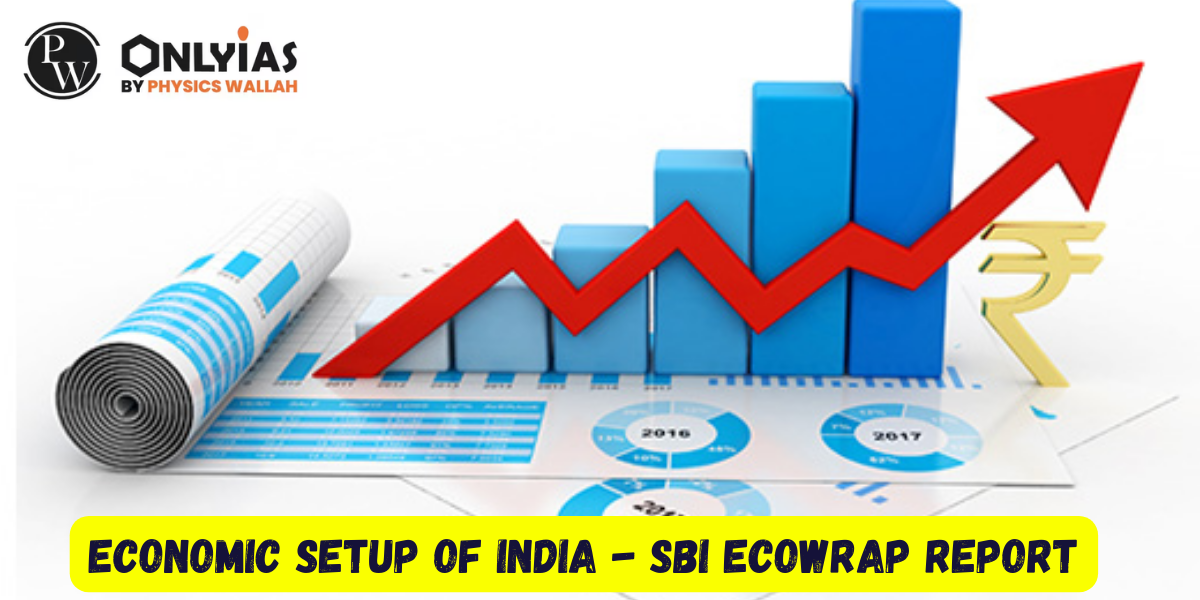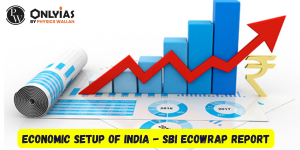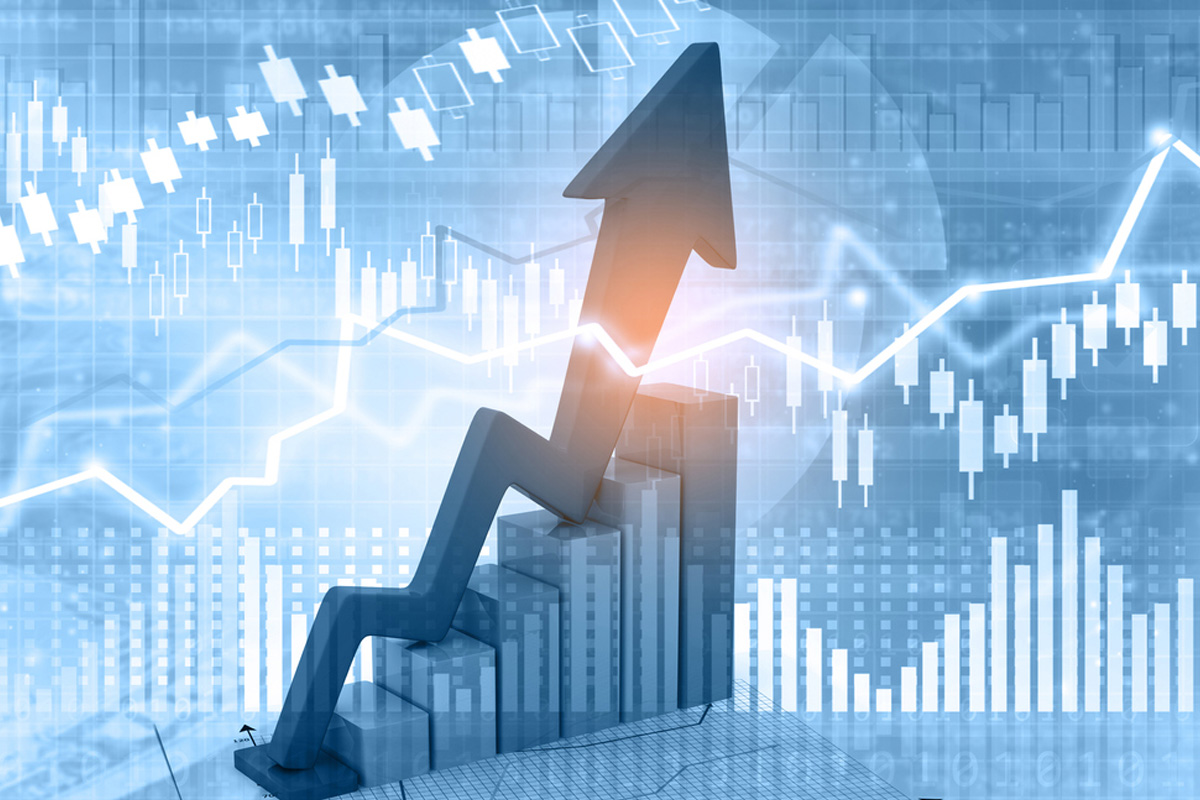
India, a diverse and dynamic nation, boasts one of the world’s most intriguing economic setups. With a rich history dating back millennia, the Indian economy has evolved through various stages, embracing profound transformations and weathering formidable challenges. As a developing country transitioning into a global economic powerhouse, India’s economic landscape is characterized by a complex interplay of factors, including a vast population, diverse industries, robust services sector, technological innovation, and government policies.
This amalgamation of elements has shaped India’s economic trajectory, propelling it towards unprecedented growth, yet also sparking debates over sustainable development and equitable distribution of wealth. In this exploration of the economic setup of India, we delve into the forces that have shaped its economic journey, the key sectors that drive its growth, and the policies that lay the foundation for its future prosperity.
In this article we will try to Understand the Economic Setup of India according to the SBI Ecowrap Report.

According to the SBI Ecowrap report from the Economic Research Department of the State Bank of India, it is projected that India will achieve the status of the world’s third-largest economy by the fiscal year 2027 (FY28). This prediction is based on the actual GDP data available as of March 2023. The report highlights India’s remarkable progress since 2014 when it was ranked tenth, indicating a significant improvement of seven places in the global economic rankings. Moreover, this achievement is expected to occur two years earlier than previously forecasted (by 2029). SBI’s economists made these observations regarding India’s economic trajectory.
The report emphasizes that a growth rate of 6.5-7 percent is now considered the new norm, especially in a world filled with uncertainties. The economists at the state-owned lender believe that the current state of the economy can be described as a “sustained goldilocks” period, and they see India’s potential rise to become the third largest economy as a remarkable achievement by any standards.
By 2027 (or FY28), India is projected to reach the third position in the global economy, with at least two of its states, Maharashtra and Uttar Pradesh, surpassing the $500 billion mark. The northern state of Uttar Pradesh, under the leadership of Yogi Adityanath, is often referred to as the “land of the midnight sun.” The GDP of these major Indian states in 2027 is expected to exceed the economies of certain Asian and European countries, such as Vietnam and Norway, among others.
Prime Minister Narendra Modi has expressed confidence that India will secure its place among the top three economies globally if he is re-elected for a third term in office.
India, with its vast population, diverse culture, and rich history, is not only one of the world’s oldest civilizations but also one of the fastest-growing economies today. Its economic setup is complex and dynamic, shaped by various factors, policies, and reforms over the years. In this article, we will delve into the key aspects of the Indian economic setup, exploring its strengths, challenges, and potential for growth.
The Indian economy is classified as a mixed economy, combining elements of both capitalism and socialism. It follows a democratic system, allowing for private and public ownership of businesses. Major economic activities include agriculture, manufacturing, and services, with the services sector being the largest contributor to the Gross Domestic Product (GDP).
Economic Setup of India in Agriculture: Agriculture plays a vital role in India’s economic setup, employing a significant portion of the workforce. It contributes around 15% to the country’s GDP and remains a critical source of livelihood for rural populations.
Economic Setup of India in Manufacturing: The manufacturing sector in India has been steadily growing over the years, contributing around 17-18% to the GDP. Industries like textiles, pharmaceuticals, automobiles, and electronics have seen notable expansion.
Economic Setup of India in Services: The services sector is the backbone of the Indian economy, accounting for approximately 55-60% of the GDP. Key components include information technology, telecommunications, banking, finance, tourism, and healthcare.
India’s economic journey can be traced back to 1991 when it initiated a series of significant economic reforms. Facing a severe balance of payments crisis, the government decided to open up the Indian economy to foreign investment, reduce trade barriers, and encourage privatization. These reforms, collectively known as the “Liberalization, Privatization, and Globalization” (LPG) reforms, led to a transformation in the economic setup.
The LPG reforms unleashed the potential of the Indian economy, attracting foreign direct investment (FDI) and encouraging domestic entrepreneurship. The technology and services sectors, in particular, experienced rapid growth, earning India the reputation of a global IT hub.
Infrastructure development is crucial for any growing economy, and India has made significant strides in this area. The country has been investing in roads, railways, airports, and ports to enhance connectivity and facilitate the movement of goods and people. Improvements in infrastructure have not only boosted trade and commerce but have also played a vital role in the rise of the manufacturing and services sectors.
India’s demographic dividend, characterized by a large and youthful population, is often seen as one of its significant strengths. With a median age of around 27 years, India has a vast workforce, providing ample labor for various industries. However, for India to harness this potential, it needs to invest in skill development and education to ensure that its workforce is equipped to meet the demands of a rapidly evolving job market.
While India’s economic setup has shown remarkable progress, it still faces several challenges:
a. Economic Setup of India in Income Inequality: Income disparity between urban and rural areas and among different social strata remains a persistent issue. Ensuring inclusive growth that benefits all sections of society is a challenge that requires targeted policies.
b. Economic Setup of India in Unemployment: Job creation has not kept pace with the growing workforce, leading to unemployment and underemployment in certain sectors.
c. Economic Setup of India in Agricultural Distress: Despite employing a large percentage of the population, the agricultural sector faces numerous challenges, including low productivity, lack of infrastructure, and vulnerability to climate change.
d. Economic Setup of India in Fiscal Deficit: India struggles with fiscal deficits, leading to a growing public debt burden and potential macroeconomic imbalances.
e. Economic Setup of India in Environmental Concerns: Economic growth has come at the cost of environmental degradation. Sustainable development is a pressing need to balance economic growth with environmental protection.
Despite the challenges, India’s economic setup holds immense promise. The country’s young population, coupled with the growing middle class and advancements in technology, creates a favorable environment for innovation and entrepreneurship. To harness this potential fully, India must focus on improving its education system, promoting research and development, and creating an enabling business environment.

Additionally, India can leverage its manufacturing capabilities to become a global manufacturing hub, attracting investment from multinational corporations seeking alternatives to China. The services sector, especially information technology and business process outsourcing, is likely to continue its growth trajectory, offering opportunities for skilled professionals and further contributing to the GDP.
1. Economic Setup of India Future Prospects in Demographics and Labor Force: India has a large and young population, which can be an advantage if the workforce is properly skilled and harnessed. However, challenges such as unemployment and underemployment remain, and there is a need to improve the quality of education and skill development to make the labor force more productive.
2. Economic Setup of India Future Prospects in Technology and Innovation: India has emerged as a global hub for IT and software services. In recent years, it has been witnessing a growing startup ecosystem and innovation culture. Encouragement of research and development, as well as investments in technology, can further boost India’s competitiveness in the global market.
3. Economic Setup of India Future Prospects in Infrastructure Development: India has made significant strides in infrastructure development, but there is still room for improvement. Investments in areas like transportation, energy, and digital infrastructure will enhance connectivity and promote economic growth.
4. Economic Setup of India Future Prospects in Manufacturing and Industrialization: India has been working on initiatives like “Make in India” to promote manufacturing and industrialization. To be successful, India needs to address challenges related to ease of doing business, land acquisition, labor laws, and the availability of skilled labor.
5. Economic Setup of India Future Prospects in Services Sector: The services sector, particularly IT, ITES (Information Technology Enabled Services), and BPO (Business Process Outsourcing), has been a significant contributor to India’s economic growth. Expanding into new services and leveraging technology will be crucial for the sector’s sustained growth.
6. Economic Setup of India Future Prospects in Agriculture and Rural Development: Agriculture remains a vital sector, employing a large portion of the population. Modernizing agricultural practices, improving irrigation, and investing in rural development will not only enhance food security but also create employment opportunities in the rural areas.
7. Economic Setup of India Future Prospects in Sustainability and Green Initiatives: As the world moves towards sustainable development, India has an opportunity to embrace green technologies, renewable energy, and eco-friendly practices. Emphasizing sustainability can open up new avenues for economic growth and international collaborations.
8. Economic Setup of India Future Prospects in Global Trade and Economic Partnerships: India has been actively engaged in global trade, and it is essential to strengthen economic partnerships with various countries and regions. Trade agreements and a more open approach to global markets can lead to increased export opportunities.
9. Economic Setup of India Future Prospects in Fiscal Management and Economic Reforms: Sound fiscal management, reducing red tape, and implementing further economic reforms will help create a conducive environment for investments and economic growth.
10. Economic Setup of India Future Prospects in Challenges: India faces various challenges, including income inequality, unemployment, infrastructure deficits, bureaucratic hurdles, and regional disparities. Addressing these issues will be crucial for sustained and inclusive economic development.
International Organisations and their Headquarters: The Complete Updated List 2023
Neighboring countries of India Complete List, Maps and Border 2023

<div class="new-fform">
</div>